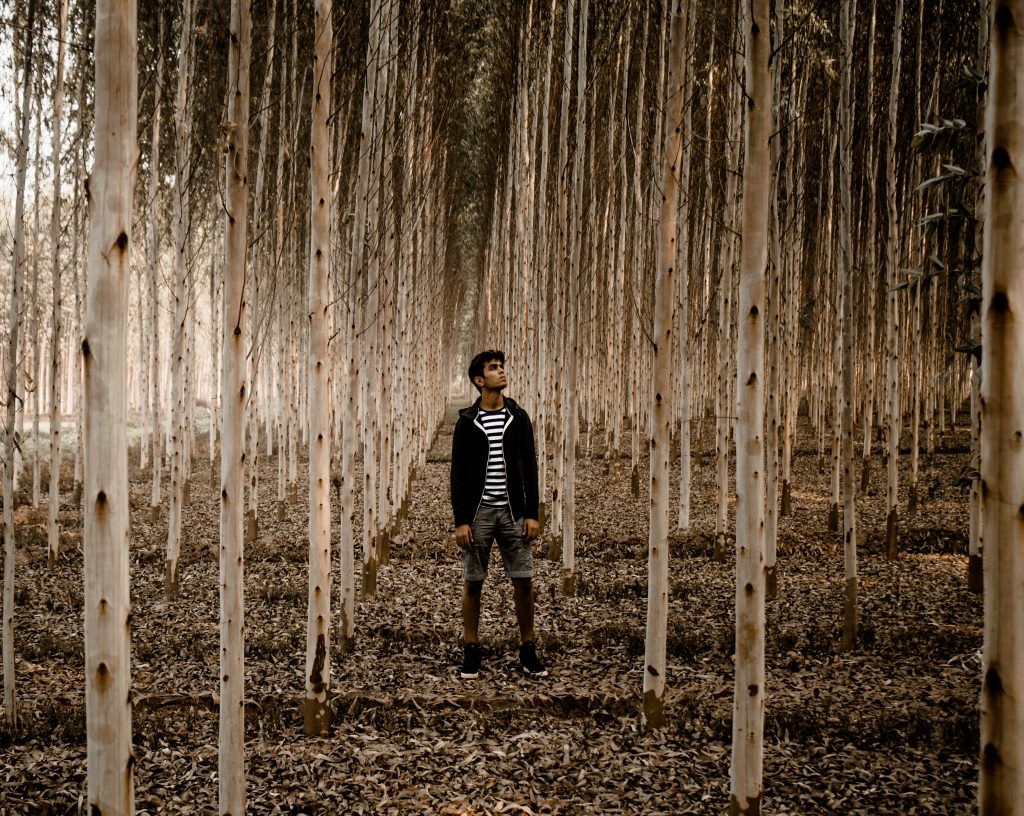
Rigorously Imagining Future Ethical Decisions for Ghost Forests of 2075
Future ‘Ghost Forests’ have very little natural biodiversity of their own, being genetically enhanced to grow fast to the specific industry needs of 2075. In fact, wildlife cannot sustainably live there. As a consequence, animals are frequently pushed further and further away to the remaining few wild areas that are left to store carbon. Between an immediate threat of extinction facing the remaining animal population, and the need to produce more sustainable materials, the situation needs hard decisions.
One green-entrepreneur sees opportunity in shifting away from ‘Ghost Forests’. A forest hippy finds solitude in the natural forest, and just wants to enjoy the harmony of the place. An activist wants to create more forceful action to make things change quickly. Each are quite different; however, all are in agreement that they dislike these ghost forest, even though there is no clear solution available and natural forest biodiversity is at critical risk. Nevertheless, each are in staunch disagreement and distrust each other’s positions and approaches. In fact, they seem to find it difficult to communicate at all about this situation without compromising their very being. How and what will they decide to do?
This situation perhaps is all too familiar in society, where everyone knows that there is an impending future threat but are unable to move beyond their immediate needs to find and act upon a viable solution.
It was the second conference day at Logomo, in a 3rd floor back room, small groups of participants were seated intensely considering how actors would make ethical choices about the year 2075. Their situation was tough, near impossible even, with no clear answers or straightforward solutions.
Imagination is flowing. In a very short space of time the participants had developed their characters, drawn from random constraints, and brought them to life through imagination. Going around the table as each introduces themselves, there is quickly a sense that tensions and camaraderie are emerging between them.
Next, the game takes a shift as the central metaphors that so far have guided the game, are changed. These new metaphors, produced by the group for their own characters, then started to bring about a more holistic transition in the relation between the characters, and a potential reframing of the entire situation. Quite quickly all hippies, green entrepreneurs and activists seem to convene in an agreement that they ‘are not so different from one another after all’, and even could work together, with a little personal change…
It is these types of value-based discussions on critical issues that can be interpreted as expressing future ethical frameworks. And those dynamics are exactly what the BioEcoJust team hope to discover.
This short provocative scenario ‘Ghost Forest’, is part of the role-based game piloted by the BioEcoJust Bioeconomy and Justice project, aiming to explore the future ethical implications for the next 100 years of the bioeconomy. The game is based on the Metaphor Molecule Game that was designed to fit the research needs of the project (Balcom Raleigh & Heinonen 2018). Adapted from CLA, It promotes immersive futuring, rigorous imagining and criticality to question a possible future. The game originates from Balcom Raleigh’s UTU Futures Studies MDP graduate’s thesis that has also been part of a UNESCO Futures Literacy Lab simulation.
The themes at play here in this role-game in the third-floor room, echoed the surrounding atmosphere of the Constructing Social Futures conference, being highly participatory, actor oriented, transformative and engaging hard critical situations.
This article originally published in Futuuri 2019 for and about the Constructing Social Futures conference in Turku.
Amos Taylor 2019, Project Researcher FFRC
